My muslin made it clear that a bit of oomph was needed to
make this dress resemble the pattern envelope.
And while I adore petticoats (and, to be honest, I will
probably wear one with this dress, just because . . .) I thought I would try
something different.
I decided to use a technique I came across in another vintage pattern, Vogue 8433.
Using a shortened version of my skirt pieces, a layer of interfacing is layered on the upper portion of
the skirt pieces, basted in place, and treated as a single layer.
This helps to give more body to the hip area that is later
pleated, gathered, or tucked into the waist measurement.
As a bit of an experiment, I used a sew-in Pellon. After all, this silhouette is supposed to look exaggerated!
I had the pleasure of examining the insides of this Ceil Chapman dress in
person. The entire skirt is underlined in Pellon, and was my original inspiration.
For a nicer finish, I layered cotton over the Pellon, and finished the lower edge with seam binding.
This particular skirt is pleated and gathered, so I basted
the pleat lines to keep the interfaced Pellon yoke in place during
construction. Actually, the basting is still in the dress at
the moment. Until I am completely
finished and do not have to keep turning the dress inside and out, I thought
it was best to keep those layered pleats in place.
This is the skirt volume on a dress form (prior to
gathering). All in all, I would have
to call this experiment a success. And yet another way to achieve an extreme vintage silhouette without the added layers of a
petticoat - great for warmer climates, I think!

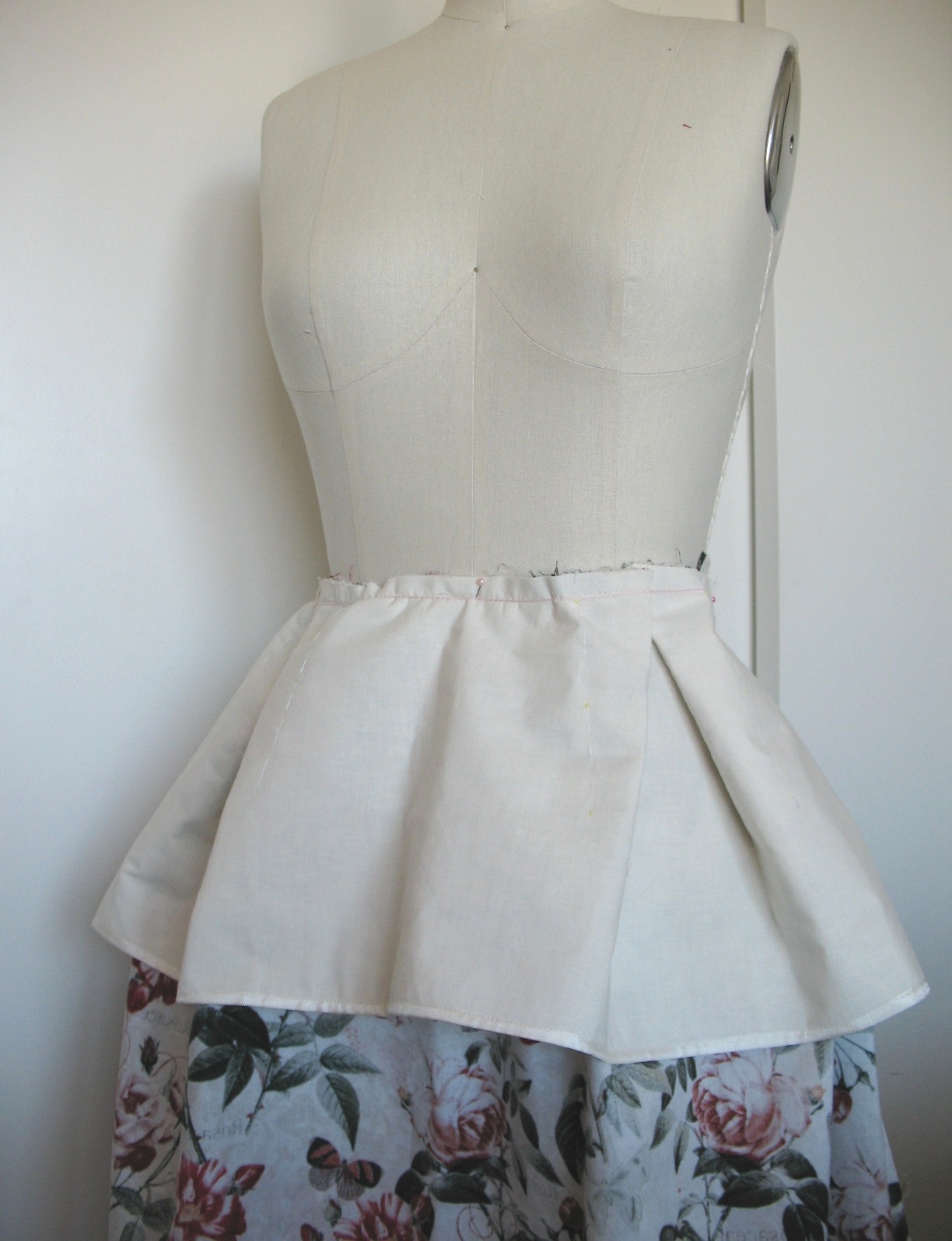

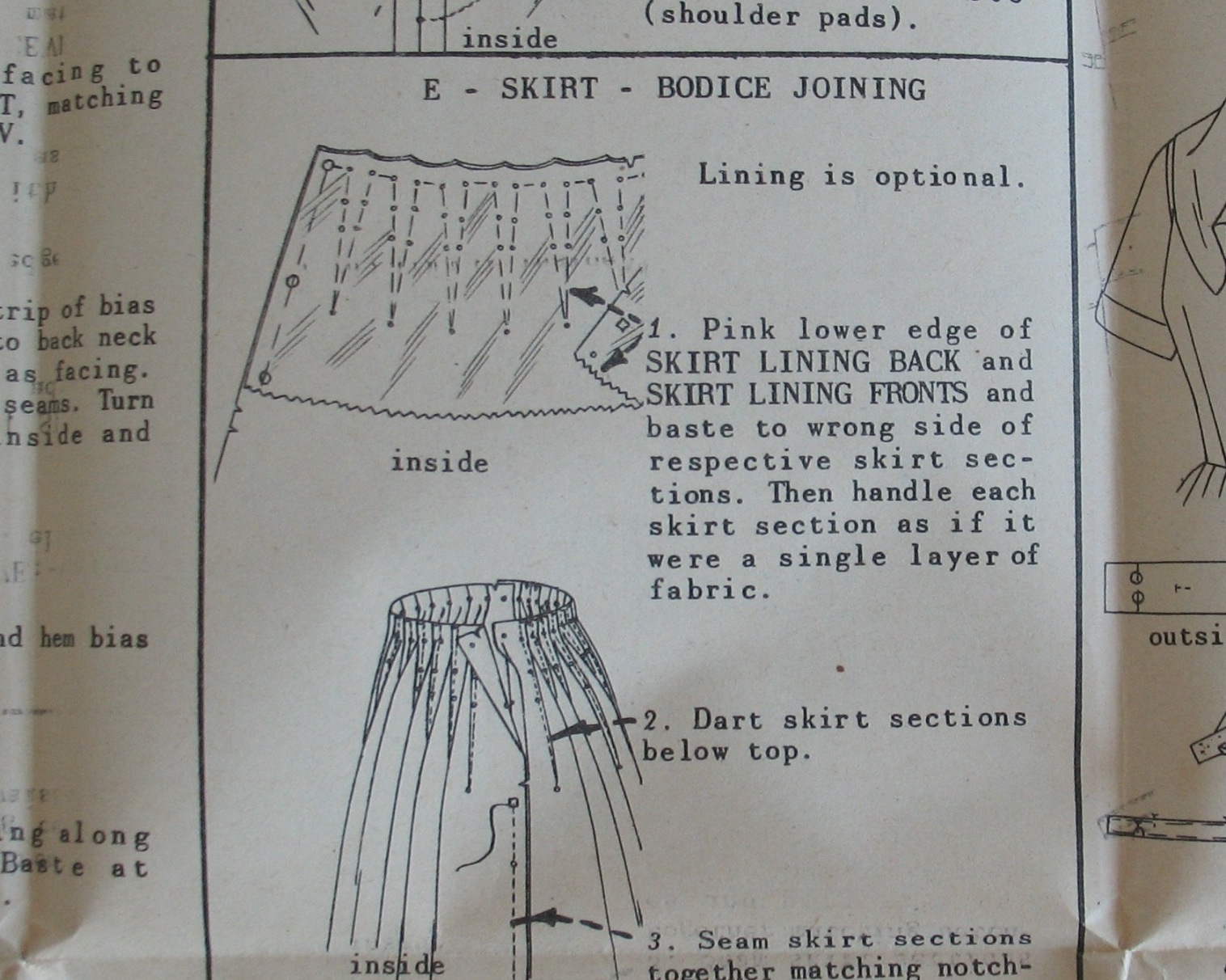
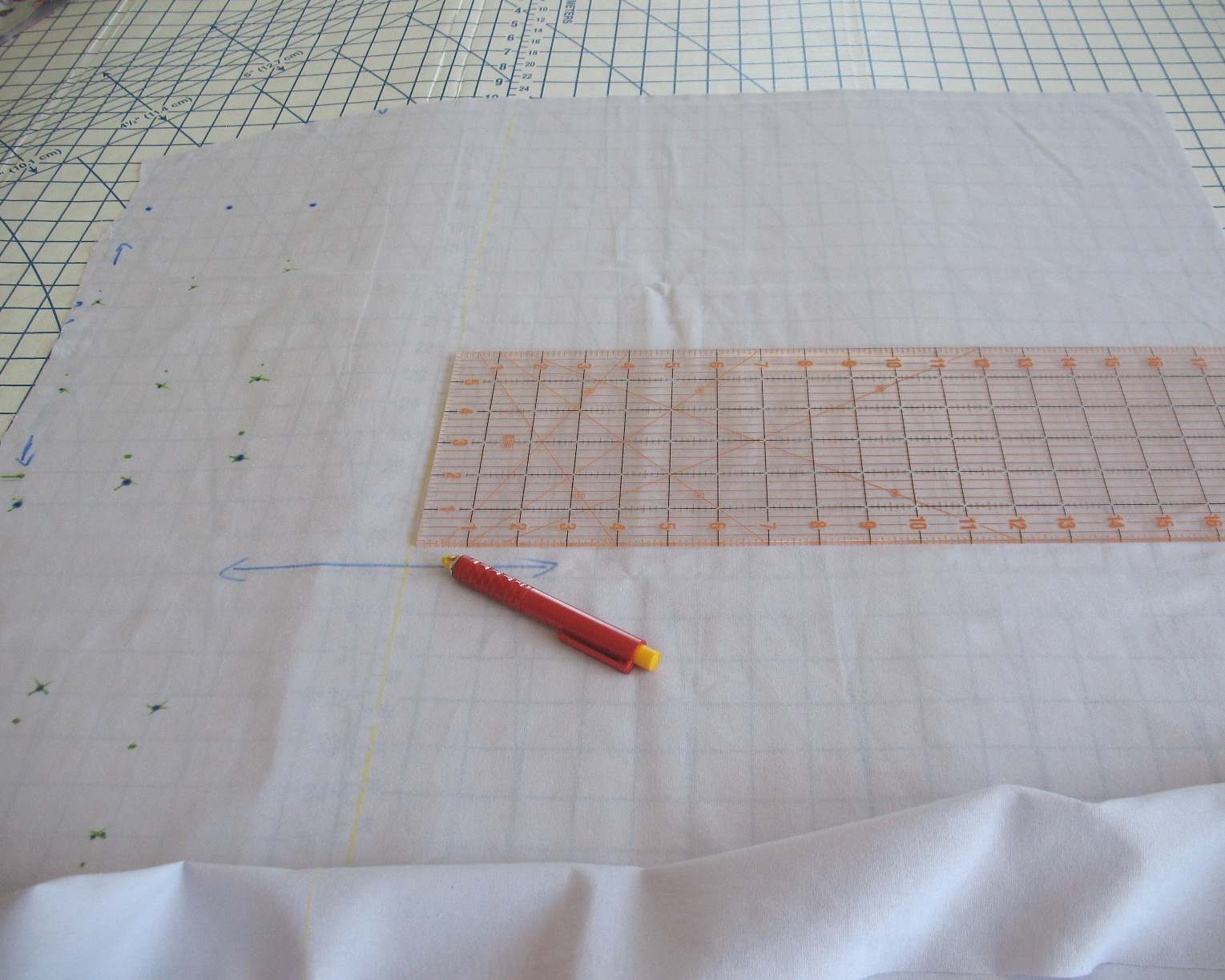

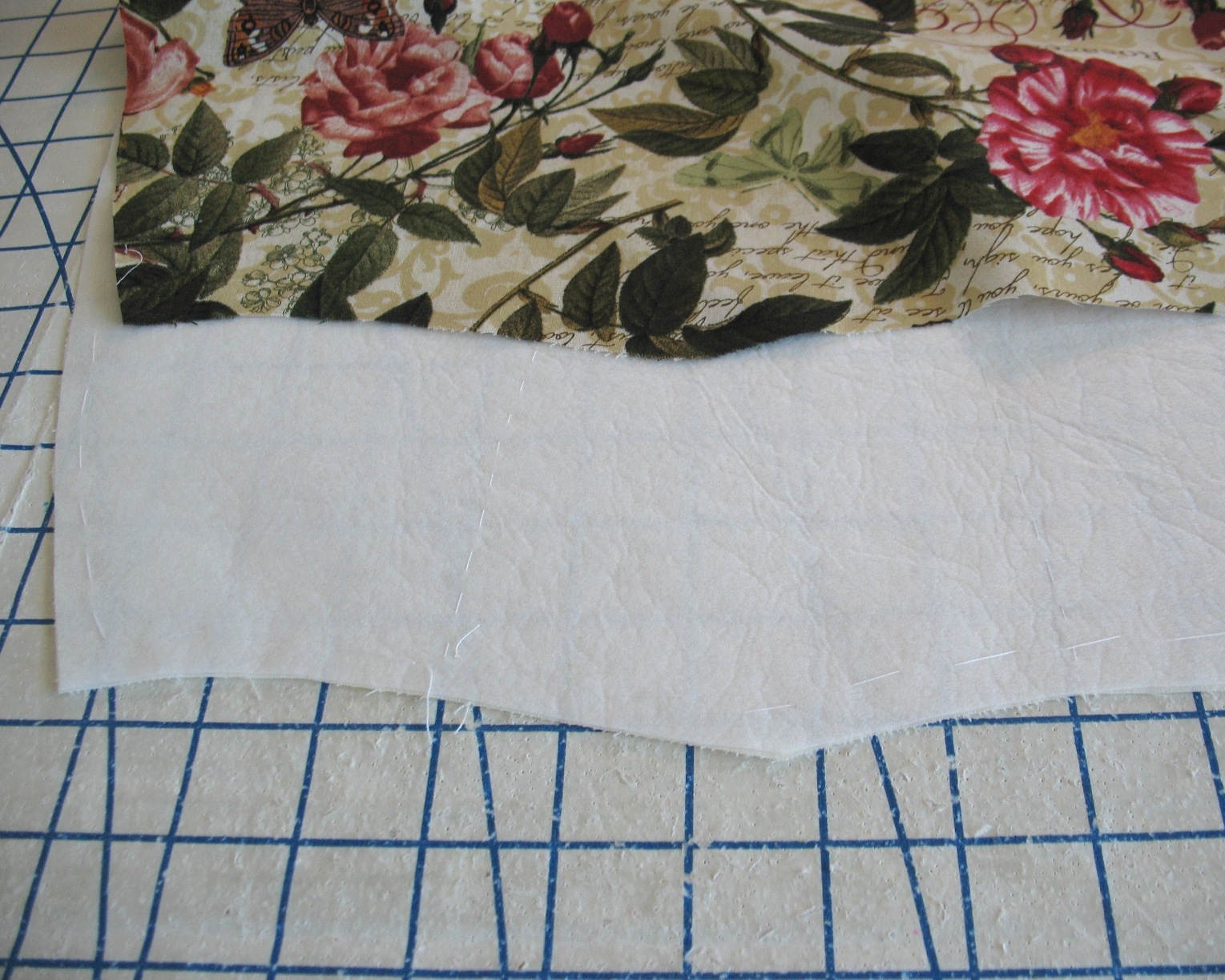
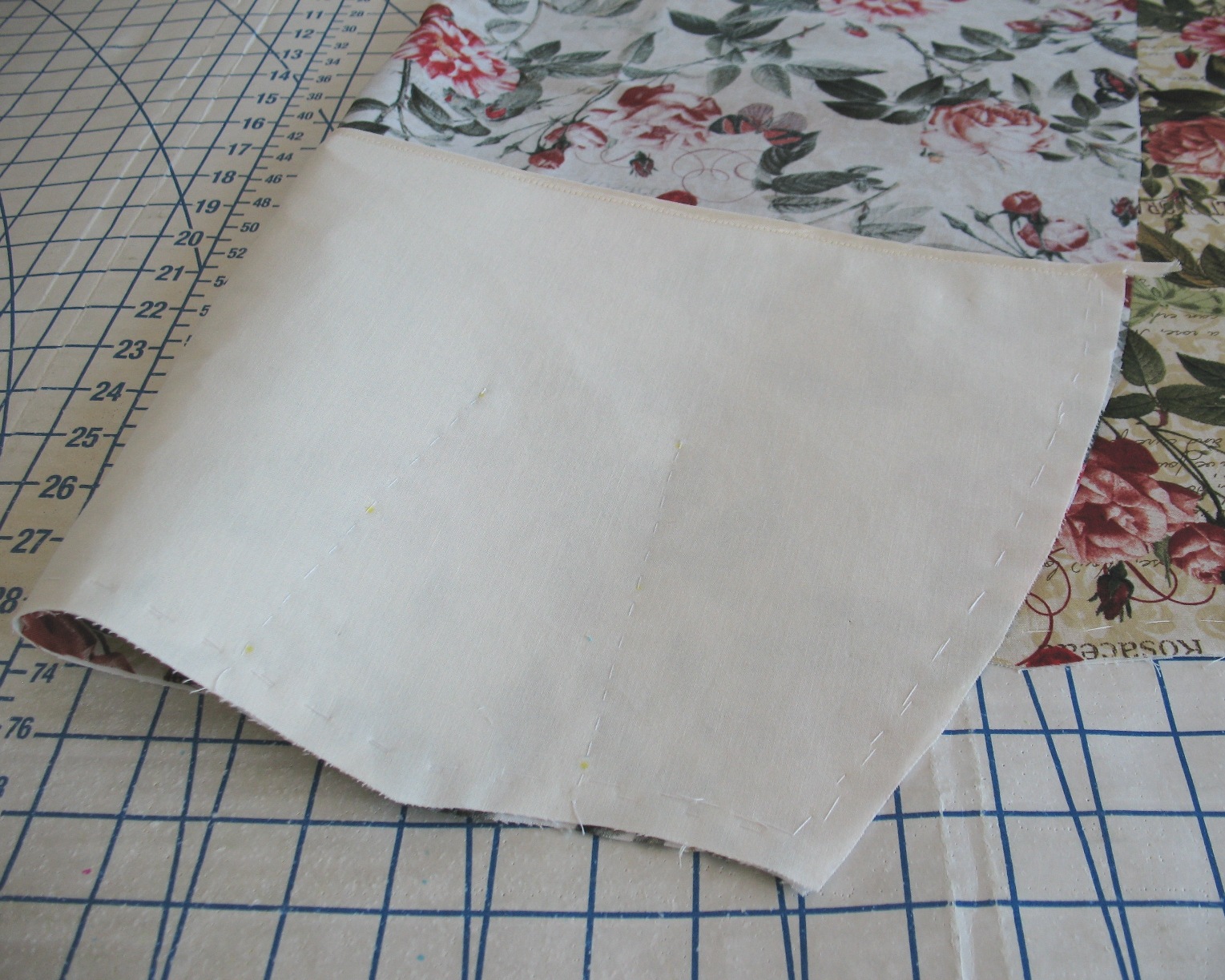

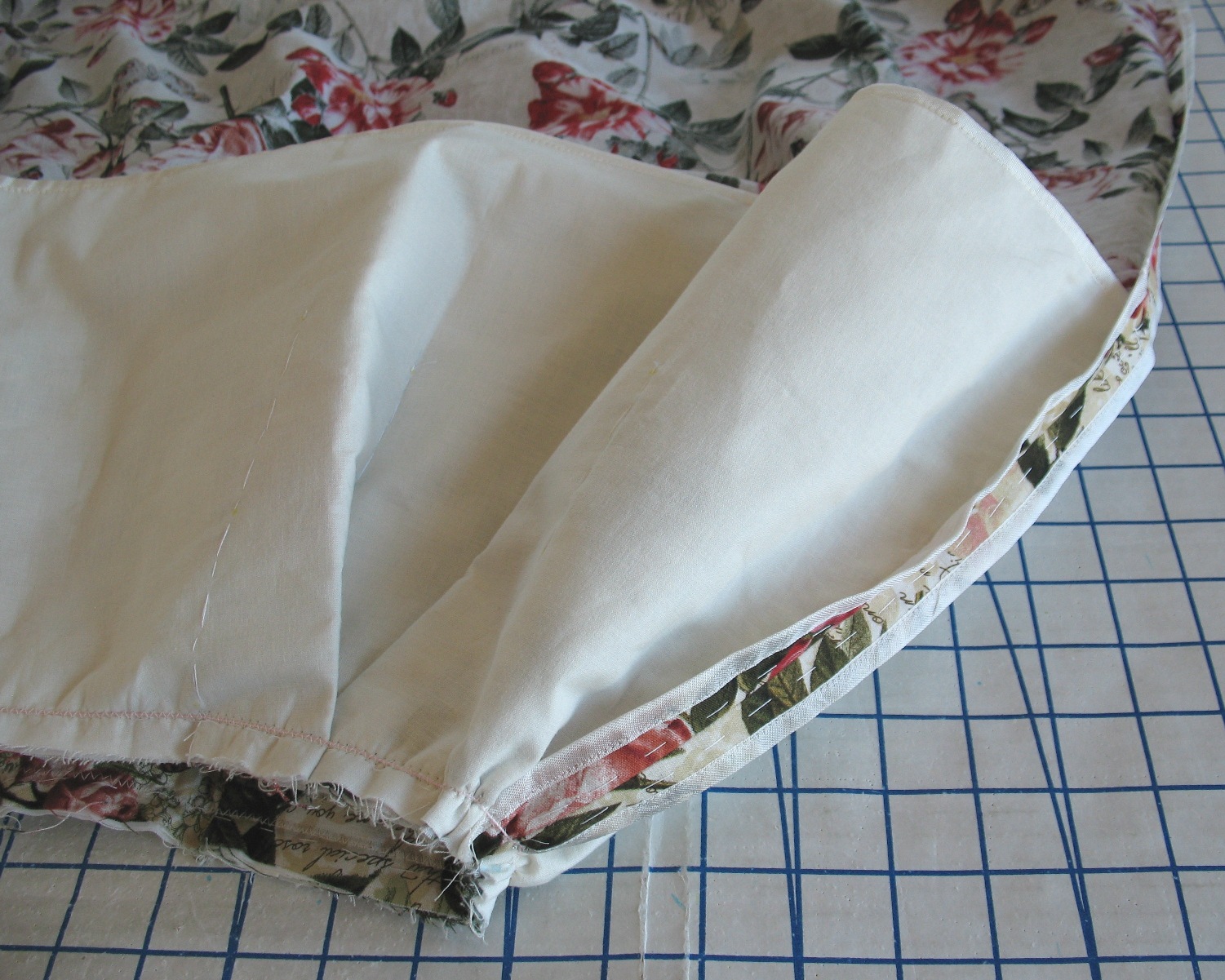
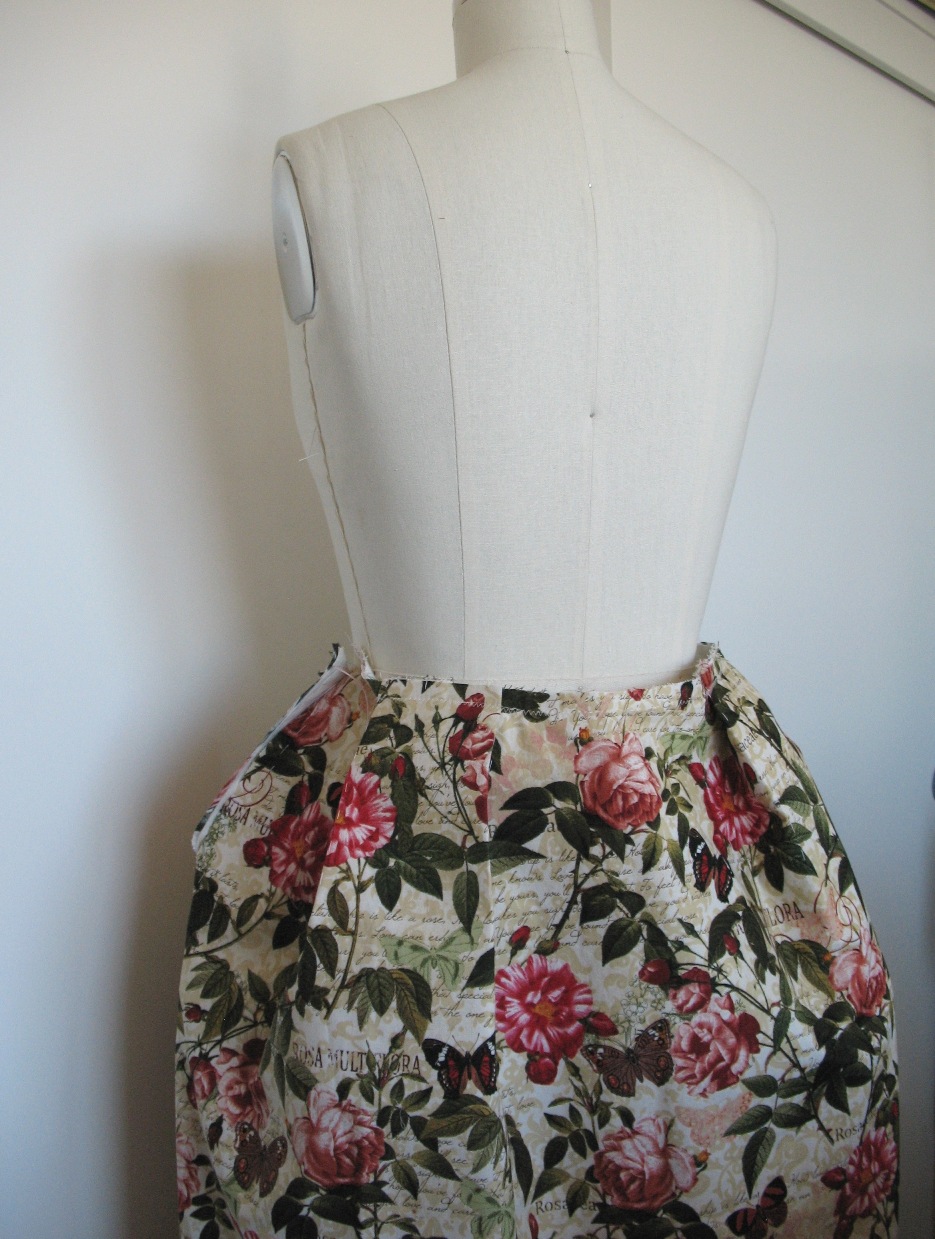
That's a really nice technique. I am making a party dress (own pattern) myself, and I was planning to do something similar with my lining - glad you posted this, I think the idea of cutting the same pieces as the skirt, but shorter, is great, and I'll incorporate it in my design.
ReplyDeleteI really like the oomph! I'm not familiar with the brand Pellon (there are other brands here in Sweden ) and when I googled it a huge amount of Pellon-products appear. May I ask what sort you are using?
ReplyDelete(Sorry if I'm posting this multiple times, I think my Google-account is playing tricks with me!)
This is a non-woven, non-fusible interfacing product. It is quite stiff (I believe it was categorized as "mid-weight" on the bolt, but it feels more sturdy than my definition of that word). A heavier hair canvas would also work, although it might get itchy if not lined with something. Basically anything that stands up by itself will work!
DeleteGreat - thank you!
DeleteIs a crinoline sewn in and a petticoat worn underneath?
ReplyDeleteI am embarrassed to say that I don’t actually know the formal answer to that question.
DeleteCrinoline can actually refer to a stiff material used to make a petticoat. And cage crinoline refers to what I think of as a hoop skirt from the Victorian era (to help relieve the weight of wearing layer upon layer of underskirts made out of crinoline in previous years).
A petticoat was not originally used exclusively as an undergarment (think 1700s), although it was a separate skirt garment, which then morphed into underwear in the 19th century. But vintage Victorian and Edwardian petticoats were certainly worn as outwear in the 1970s.
These days, I would say the two terms are interchangeable for a separate underskirt made to exaggerate a silhouette. Or it can refer to a specific textile.
How is that for a convoluted answer!?